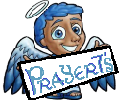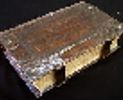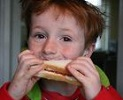
The Rose coloured Candle
Gaudete Sunday, the word Gaudete is Latin and means “rejoice”. Advent used to be a 40 day fast like Lent and was called “the small Lent”. Gaudete Sunday was a break during the fast. The spirit of the liturgy all through Advent is one of expectation and preparation for the feast of Christmas as well as for the second coming of Christ, and the exercises in repentance suitable to a Lenten type period were put aside, on the 3rd Sunday of Advent to celebrate the joy and gladness in the promised Redemption that was coming.
This Sunday is tied to John the Baptist, who prepared the way for his cousin. John message announced that the “Light of the World” was coming, he called people to repent for their sins and baptized them. The way a gentile convert to Judiasm would be baptized. A baptism can be a joyous occasion.
Today should be a time of joy, think of the joy in the heart of John’s mother, Elizabeth, Mary’s cousin, barren for so many years. Now finally in her old age with a baby lying in her arms, and a heart full of joy knowing this is not just any baby, her boy is the prophet who will announce the coming of the Messiah.
I know Christmas can be a time of sorrow for many, with now absent loved ones. But there is a difference between joy and happiness.
So try to put aside any grief for today. Let us rejoice in the unconditional love that the Father has for us, and the Joy that we have in Jesus.
Hanukkah - The Jewish Festival of Lights
Like Advent, Hanukkah is all about Light, and the true Light of the world Jesus, is recorded in the gospels as attending the Hanukkah (re-dedication) festival in the Jerusalem Temple. I love the story of Hanukkah and lighting the candles that shine out hope to the world. It starts tonight just after sunset when the servant candle (representing the Messiah) is lit and then the first of the Hanukkah candles for the first night of Hanukkah. Hanukkah celebrates miracles, God was no longer sending prophets and seemed to be silent, but he was still watching over his people. He was preparing to send His Son.

 Welcome
Welcome Calendar
Calendar Today's Word
Today's Word Lauds
Lauds Terce
Terce Sext
Sext None
None Vespers
Vespers Compline
Compline Matins
Matins